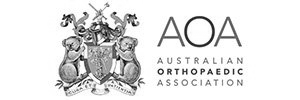Achilles Tendon Surgery
What is Achilles Tendon Surgery?
Achilles Tendon Surgeries are a group of procedures designed to resolve a number of Ankle or Achilles Tendon problems and injuries.
The surgeries include:
- Ankle Arthroscopy
- Gastrocnemius recession -
- Anke Débridement and Repair - tendon has less than 50% damage
- Débridement with Tendon Transfer - tendon has more than 50% damage
What Does Achilles Tendon Surgery Treat
The procedure can be performed individually or in combination generally they treat the following conditions:
- Ankle Arthroscopy -
- Gastrocnemius recession - to lengthen the calf (gastrocnemius) muscles
- Ankle Débridement and Repair - to remove any damaged tendon and repair with sutures and stitches what remains
- Débridement with Tendon Transfer - to remove damaged tendons and repair by adding transferred tendons to build up the the Achilles strength
When is Achilles Tendon Surgery Indicated
Achilles tendon repair surgery is indicated for patients with Tendinopathy, surgery may also be recommended especially for
- competitive athletes,
- those who perform physical work, or
- in instances where the tendon re-ruptures.
The advantage of a nonoperative approach is in particular to Ruptured Achilles Tendons is avoidance of any wound complications. The main disadvantage of a non-surgical approach is the higher re-rupture rate and the risk that the heal tendon is “stretched out” and the calf is weaker as a result.
About Gastrocnemius Recession
Gastrocnemius Recession involve the surgical lengthening of the calf (gastrocnemius) muscles. Tight calf muscles place increased stress on the Achilles tendon, and causes difficulty flexing their feet, despite consistent stretching. Lengthened muscles increase the ankles range of motion of the ankle
Débridement and Repair Surgery
Débridement and Repair may be suitable when less than 50% of the tendon is damaged. The damaged part of the Achilles tendon is removed, followed by tendon repaired with sutures, or stitches.
In Insertional Tendinitis, the bone spur is also removed. Repair of the tendon in these instances may require the use of metal or plastic anchors to help hold the Achilles tendon to the heel bone, where it attaches.
Débridement with Tendon Transfer Surgery
Débridement with Tendon Transfer may be suitable when less than 50% of the tendon is damaged. The damaged part of the Achilles tendon is removed, and if the remaining portion of the tendon is not strong enough to function alone an Achilles tendon transfer is performed. This additional tendon is used to prevent the remaining tendon from rupturing with activity,
The extra tendon used is the tendon that helps the big toe point down. This is moved to the heel bone to add strength to the damaged tendon. The big toe will still be able to move, and most patients will not notice a change in the way they walk or run. After the tendon Transfer the tendons repaired with sutures, or stitches.
Other Achilles Tendon Procedures
Achilles Tendon Surgery Process
- Day of Surgery
- Report any infections to me prior to surgery as the procedure cannot be performed until all infections have cleared up.
- Do not consume alcohol - 24 hours prior to treatment,
- Do not eat or drink anything, including water, for 6 hours before surgery
- Avoid vigorous physical activity or exercise 24 hours prior to surgery
- Surgery Recovery
In the recovery ward
- You will awaken after surgery in the recovery ward
- You will be observed & monitored
- Advised of pain relief & what is next
- When appropriate you will be moved to the ward
- During Surgery
- Administration of General Anaesthesia
- The entire procedure can take 60 minutes to two hours.
- The procedure is performed and sent to the recovery room, for observation
- Pain medications are prescribed to help with pain during the recovery phase.
- Post Surgery Care
- Pain Management - Oral pain relievers will be prescribed to help you manage your pain.
- Apply an ice bag to the affected area to reduce both swelling and pain.
- Use Bracing as directed
- Use Crutches as directed
- Undertake physical therapy to aid recovery & mobility
- When appropriate you will be discharged from Hospital (1-5 days)
- Consume nutritious foods and plenty of water.
- Attend scheduled Follow Up Appointments
Achilles Tendon Rehabilitation Program
- 1 Week - Post Op Rehabilitation
Your Rehab Program starts soon after your procedure, it involves
- Physical therapy to help you regain strength and control
- Setting recovery goals for pain relief, movement, strength
- 6 Weeks - Post Op Rehabilitation
Your Rehab Program will have progressed
- Your weight-bearing is advanced to full weight
- 6 weeks post-op your brace is replaced with a lateral stabilizer brace.
- 8 weeks post-op your brace should no longer be required
- 32 Weeks - Post Op Rehabilitation
- 4 Weeks - Post Op Rehabilitation
- You will be added with progressive quadriceps strengthening and straight-leg raises can be trained with an unlocked brace if there is no patellar lag.
- Weight bearing is restricted to toe touch with crutches for the first four weeks.
- 10 Weeks - Post Op Rehabilitation
- 52 Weeks - Post Op Rehabilitation
Achilles Tendon Risks & Complications Associated
- General Risks with Surgery
General Complications With Surgery
All operations have risks. Apart from pain, most patients don’t have any of these problems. The general risk of a surgical complication is about 5%, the Risk of serious complications is less than 1%. General complications from surgery can include:
- Anesthetics - Allergic reactions to medications
- Bleeding & Blood Loss -Blood loss requiring transfusion with its low risk of disease transmission
- Blood Clotting - Blood clots can form in the leg’s calf muscles causing Deep Venous Thrombosis (DVT) and can travel to the lung (Pulmonary Embolism). These can occasionally be serious and even life-threatening (Heart Attack, Stroke). If you get calf pain or shortness of breath at any stage, you should notify your surgeon.
- Infection - During or Postoperative Infection can occur with any operation. Infection rates are approximately 1%, if an infection occurs it can be treated with antibiotics but may require further surgery. Very rarely your hip may need to be removed to eradicate infection.
- Death Due to Surgery - Serious medical problems can lead to ongoing health concerns (kidney failure, pneumonia, bladder infections, causing prolonged hospitalization and in rare cases death.
- Delayed Healing - Some patients take longer to heal than others, particularly people with more than one illness
- Difficulty Breathing - Most patients can be removed from the breathing machine after their surgery. Some patients can require the ventilator longer or lung function rehab
- Surgical Injury - When having surgery there is the risk that parts of the body will be damaged in the process
- Other Complications - Tingling, Numbness or Discomfort Around the Operative Region, Swelling & Bruising, Muscle Stiffness, Reflex Sympathetic Dystrophy, Scarring
- Specific Risks with Your Surgery
Specific Hip Surgery Complications
- Dislocation - The risk of dislocation is low. If the hip dislocates from its socket it needs to be put back into place with an anaesthetic. Rarely this becomes a recurrent problem needing further surgery.
The risk of hip dislocation is greatly reduced where patients follow these precautions for the first 6 weeks after surgery the:
- Keeps your legs apart and feet facing forwards
- Do not bend at the waist beyond a right angle
- Do not twist at the waist or cross your legs
- Damage To Nerves Or Blood Vessels - Complications from nerve blocks such as infection or nerve damage are rare but can lead to weakness, numbness, and loss of sensation in part of the leg. Damage to blood vessels may require further surgery if bleeding is ongoing.
- Wound Irritation - Your scar can be sensitive or have a surrounding area of numbness. This normally decreases over time and does not lead to any problems with your new joint. Local discomfort can take months to fully resolve.
- Leg Length Inequality - Any limb length discrepancy is due to the difficulty of making the legs exactly the same length as each other. Occasionally the leg is deliberately lengthened to make the hip stable during surgery. There are some occasions when it is simply not possible to match the leg lengths. All leg length inequalities can be treated by a simple shoe raise on the shorter side.
- Limp Due To Muscle Weakness - Discuss your concerns thoroughly with your Orthopaedic Surgeon prior to surgery.
- Wear & Loosening - All joints eventually wear out. The more active you are, the quicker this will occur. In general 80-90% of hip replacements survive 15-20 years.
- Failure To Relieve Pain - Very rare but may occur especially if some pain is coming from other areas such as the spine.
- Scarring - Unsightly or thickened scar
- Fractures - Breaks of the femur (thigh bone) or pelvis (hipbone) are also rare but can occur during or after surgery. This may prolong your recovery, or require further surgery. Discuss your concerns thoroughly with your orthopaedic surgeon prior to surgery.
Summary
Surgery is not a pleasant prospect for anyone, but for some people with arthritis, it could mean the difference between leading a normal life or putting up with a debilitating condition.
Surgery can be regarded as part of your treatment plan - it may help to restore function to your damaged joints as well as relieve pain.
Surgical Follow Ups
- 2 Weeks After Surgery
- Check Up with Surgeon
- X Rays
- 12 Weeks After Surgery
- Check-Up with Surgeon
- X Rays
- After 3 months, more physical activities, such as sports will be possible
- 1 Year After Surgery
- Check Up with Surgeon
- X Rays
- 6 Weeks After Surgery
At the 6 Week Check-Up your surgeon, who will assess your progress:
- Check-Up with Surgeon
- X Rays
At this time you should be able to:
- Bend the knee to 90 degrees,
- Use a cane and walk comfortably,
- Drive a car
- 32 Weeks After Surgery
- Check Up with Surgeon
- X Rays
- Ongoing Care
You should continue to see your surgeon for the rest of your life to check your knee and take X-rays.
This is important as sometimes your knee can feel excellent, but there can be a problem only recognised on X-ray
How Risks Are Minimised
Get Moving Quickly
Early mobilisation is a major preventive measure. We strongly encourage you to get moving and out of bed as soon as possible after the operation to restore normal blood flow in the legs.
You should aim to do at least ten short walks (of between 2 and 5 minutes) each day in the first two weeks after surgery.
What Are the Consequences of Surgery?
Sometimes the potential risks and consequences of your surgical procedure need to be weighed against the benefits of a successful surgical outcome.
Like most surgery these benefits can include:
- Freedom from pain
- Increase movement
- Greater Flexibility,
- Maintained Independence
- Improved outlook, and
- Longer more enjoyable life
Although the recurrence of the presenting problem is not very common, after surgery, you would need to follow preventive measures.
It is important to avoid high impact activities during the early phase of recovery to minimise the risk of further injury. If there are any postoperative concerns or pain, please do not hesitate in contacting our rooms.






